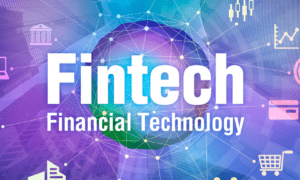Jeremy Potter, Chief Evangelist, Stavvy
Prioritizing tech projects has been one of the biggest topics of conversation in the mortgage industry over the last decade. While the digitization behind these initiatives has been in the works for a while, its acceleration was put into high gear by the COVID-19 pandemic.
Implementing digital solutions is a subject that is taking center stage as mortgage lenders and servicers look to digitize core functions to help streamline the end-to-end mortgage process into one that is faster, more efficient, and effortless for the customer.
As home buying continues to be an arduous process, organizations need to rethink the customer experience and grow in a way that can sustain an evolving market. Mortgage companies that prioritize digitizing the mortgage process will drive more productivity and profitability.
Covid’s effects on the digitization of mortgages
In the wake of COVID-19, the mortgage lending and servicing sector was forced to rework operating models that could handle the changing needs of working from anywhere, respond to customer expectations amidst unprecedented volumes, manage risk, and set themselves up for recovery.
The pandemic generated questions about previous processes that were no longer fine because of the restriction of working in a physical place, primarily with all different stakeholders, most notably closing title settlement companies. As a result, improved digital capabilities were created to support service changes to lenders and homeowners, leading to a faster, more intuitive mortgage process from start to finish.
Automated processes allowed lenders and housing professionals to operate more efficiently and at greater speeds. Perhaps most importantly, studies show that borrowers like the more digitized processes and have come to expect them, with 60 percent of both purchase and refinance borrowers being open to completing their entire mortgage application online, without phone or in-person support.
Room for improvement
Many origination and servicing processes are still slow, labor intensive, and fragmented. There are still areas in the mortgage lending process that need digitization and are hindered by paper-based, manual processes. Due to some innovation around underwriting and data ingestion for credit score, income, and employment, the most manual pieces still left for improvement tend to be:
-
Appraisal — Appraisers still have to visit properties and generate reports
-
Title — The interactions may be digitized but it remains a very manual process to generate a title policy, remit payment, etc.
-
Closing — The ceremonial nature behind the process with formal signatures
The ability to ingest data over documents has become critical. Whether it’s underwriting or closing, the question then becomes – How can we rely more heavily on tools and delegate to technology so we can better adapt to evolving customer expectations?
Providing a digital end-to-end eMortgage origination process is the answer.
What are some major benefits of digitizing mortgages?
De-risks the mortgage space with transparency and visibility
Transparency means you can locate either data or assets in real-time. Visibility leans more towards the individuals who need to do work with each other or off of the data. They can see where everything resides without question on closing status or where specific mortgage documents live.
It leads to better planning, coordination, and risk mitigation. It also leads to less fraud because all parties can coordinate and orchestrate together much easier.
Efficiency and Cost Savings
An eMortage lets organizations drive information and assets much faster. Everything has an interest rate or cost associated with the time, so the ability to cut down on some of those delays saves real dollars in things that are relatively administrative today.
It’s not about taking jobs away. People are still needed to solve the complex problems in the industry, but technology levels people up to offer better service, be more thoughtful and provide human analysis that saves money, not only in the delivery and efficiency of your team, but through the elimination of paper, ink, and postage costs.
Optimization
Aside from operating faster and more efficiently, the value of eMortages is proving to be as reliable as more traditional ones. Digital closings offer so much more utility and optimization. A paper closing is only as flexible as where you can get the paper quickly and the physical limitations needed to move that paper from one place to the next.
Digitizing the closing process means the data can be worked off of immediately and is kept together, reducing risk and making the company more valuable.
Competitive advantage
Digitizing the mortgage process is an asset for a company to differentiate itself from other loan providers because, simply put, their loans will close more quickly. Early adopters will get an advantage in regards to undercutting the rate relative to competitors. They will experience a short-term gain in price advantage, transparency, and visibility, and a long-term advantage because while they are working on new growth opportunities, competitors will be catching up on digitization.
Companies that don’t choose to digitize now will put them further behind the eight ball. To match the rates their competitors are offering, they will have to take on the same amount of risk—but without digitizing, they would have to take on the challenge of having to outsell as well. As assets are digitized, mortgages and rates become easier to sell. It’s that liquidity that will generate new ways of developing, packaging, and selling mortgages.
Things to consider with a digitization strategy
Technology moves very fast. Highly complex industries, by nature, do not. The mortgage process is still very fragmented. If companies choose to digitize some but not all of their processes, then various agreements are being signed in a more patchwork way. Single-use digitization or cherry-picking what to digitize is not an efficient strategy.
An important starting point to addressing manual processes and accelerating digitization is to remind yourself that you’re not broken—you’re just looking for optimization, solutions, and a competitive advantage to the things that are giving your business the most trouble.
Digitizing pain points means starting with the end in mind. Almost everyone in the industry has started with the mortgage application, but the process tends to lose investment and steam as it gets to closing time.
The industry historically has acted like the closing ends the process and they don’t create the asset with the 30 yr lifecycle in mind. Creating and connecting the asset across the life of the loan means you can manage it, trade it, and buy or sell it properly. Start with that end in mind because you can create better processes knowing what it has to look like for the long haul.
The future is equitable access
The digitization taking place in the mortgage space benefits lenders, borrowers and everyone involved in the home purchase or refinance process. Now that data is moving more quickly, digitization is meant to lower costs and enable innovation.
The future will be about access to the experts, tools, and solutions being created. The key will be for lenders and technology partners to optimize a fully-digital mortgage lending and servicing experience for the borrowers, and that includes application through to closing.
It’s those organizations who have gotten ahead and fortified their businesses with digital operations today, that will be best positioned to enhance the customer experience and take advantage of the growth opportunities of tomorrow.



































